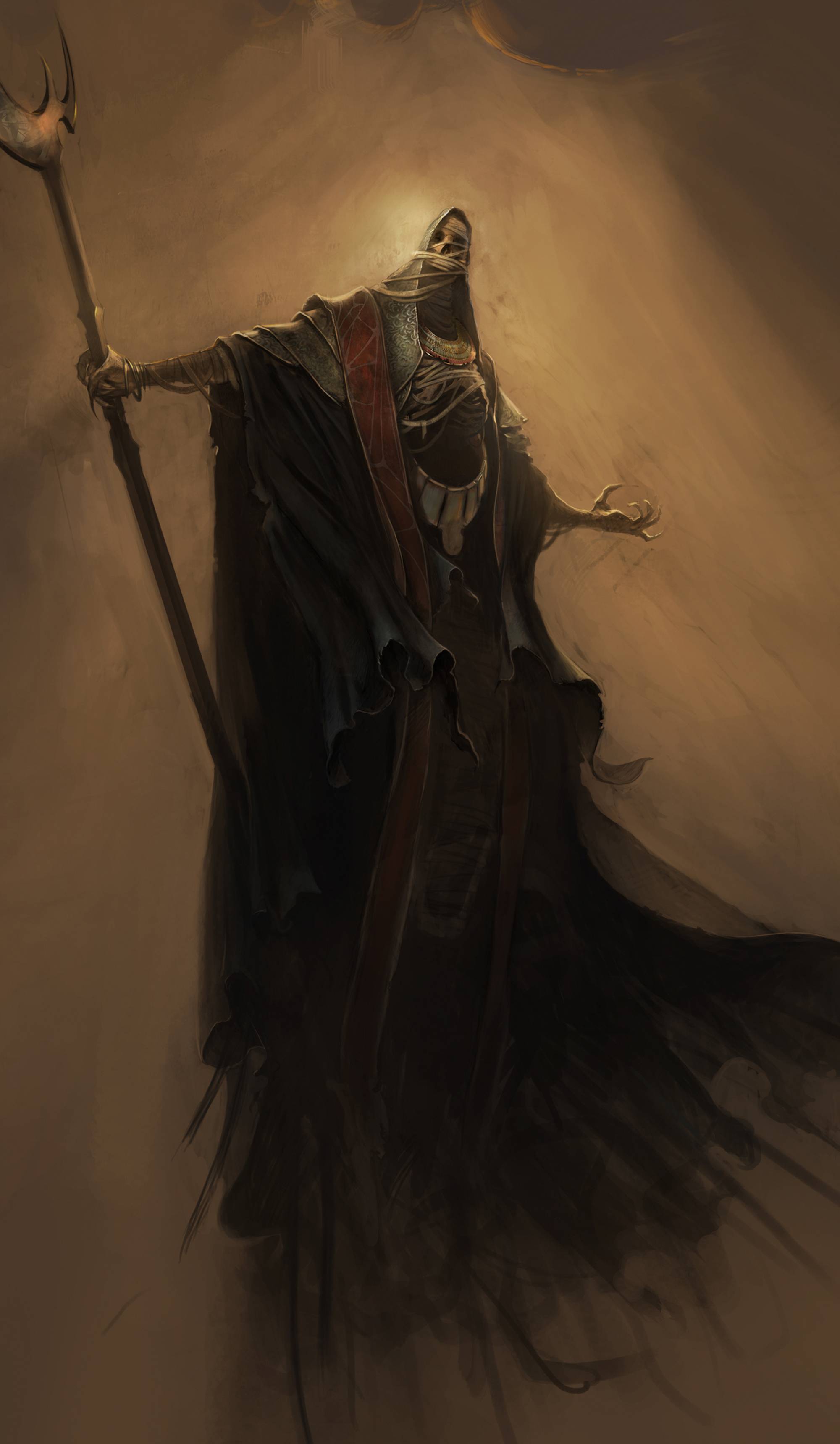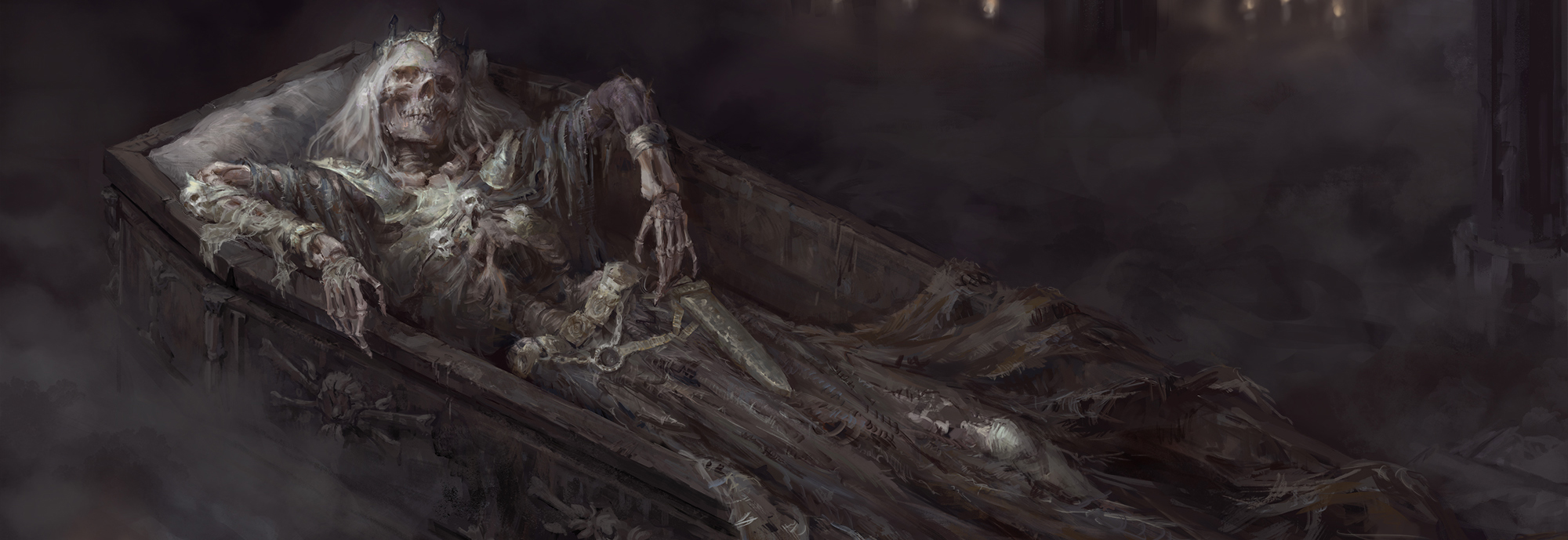Lich
Not death, child — Eternity.A lich is a form of essence-bound undead which, like the revenant, retains an essence which interacts with the world around it through the physical rather than the ethereal, primarily. A key difference separating the the two, however, is that where the revenant's soul is bound to its decaying physical body, a lich's is primarily bound to an external source, inhabiting its physical form only as a means of interacting directly with the physical world in turn. This external source, commonly referred to as a phylactery, contains a lich's soul indefinitely and allows it to exist in perpetuity without the need for rest, nourishment, or sustenance so long as the phylactery does not decay or undergo significant damage to the majority of its form. It is for this reason that numerous scholars of necromancy across the centuries have considered lichdom a more 'pure' form of undeath than other manners of so-called rebirth which allow the full maintaining of one's mind, such as vampirism or wraithdom, as one could theoretically exist as a lich for eons uninterrupted without worry of food or shelter. Even if a lich's body is entirely destroyed or mangled far beyond repair, it may simply re-manifest a new shape to inhabit and puppet across the mortal realm. Such longevity is tempered only by the creation of the phylactery at its beginning; once bound in this manner, a soul cannot be parted from the object with which it was bound without the death of the soul in question, meaning that a lich must be discerning in its choice of phylactery lest it marry its soul to an item easily destroyed by the efforts of others or time alone. Alongside the grueling process of ripping one's soul from their own body and tying it to an exterior anchor, the creation of a phylactery must also be powered by a tremendous well of aetheromantic energies; in practical terms, the binding of a soul to a phylactery and the ensuing creation of a lich requires the mass death of living organisms in possession of singular souls on scales usually reserved for desperate times of war—the decimation of a grand city's populace or scouring of an entire countryside of villages all to fuel the transformation of a single being. Thus the reason that even cultures which embrace or celebrate various forms of necromancy tend to shun the very concept of lichdom. Even so, the existence of the lich may become something of an ideal for aging students of aetheromantic sects who become more attracted to the idea of everlasting knowledge than their fellow kith. Alongside the fear of aging disappearing completely in the face of the truest form of immortality one of mortal birth could ever hope to achieve, the nature of a lich's soul becoming separated from its body means that its entire form may be used as a magical focus without the worry of backfire permanently destroying the mind or body. In this way a lich essentially stands as the pinnacle of magical capabilities, able to use its own body as an eternal wellspring; a constantly-attuned channel to the supernatural able to shape spells to its whims in the manner of the ur-fey.

by (Konami)



Comments